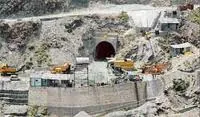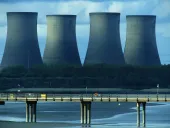
Indian Hydro Project Exposes World Bank's Abuse of Climate Funds
If the World Bank and an Indian power utility have their way, the Rampur
hydropower project in Northern India will increase global CO2 emissions
by 15 million tons, at a cost of $164 million to unsuspecting energy
consumers in Sweden. The project is a textbook example of how hydropower
companies and other investors, with support from the World Bank, are
gaming the system of climate finance.
Rampur is a 412-megawatts hydropower project on the Satluj River in the
Indian state of Himachal Pradesh. Satluj Jal Vidyut Nigam Limited
(SJVN), an Indian hydropower company originally created by the World
Bank, signed an agreement with the local government to implement the
project back in 2004. The Indian Prime Minister laid the foundation
stone in 2005. The World Bank approved a loan of $400 million for Rampur
in 2007. Throughout this process, the hydropower company SJVN assured
the public and its lenders that the scheme was a "least cost" project
and would remain financially viable even under adverse hydrological
conditions. At no time did it indicate that the project depended on
carbon credits to go forward.
Several years into project construction, t
The board of the Clean Development Mechanism is considering an application to award 15 million carbon credits for the Rampur project for the 2012-2022 period. If approved, these credits would currently have a value of $164
million. The Swedish Energy Agency has offered to buy the credits in a deal that was arranged by the World Bank.
Carbon credits from the CDM allow Northern polluters who are obliged to reduce their emissions under
the Kyoto Protocol to keep polluting if they fund emission reductions in the global South. A key condition of the CDM is that carbon credits are only awarded if a project would not go forward without them, so that continued pollution in the North is balanced by reduced emissions in the South.
In order to qualify for support from the CDM, SJVN now argues that its least cost project would not go forward without carbon credits. Since the project is already 70 percent complete, this is obviously a blatant
lie. If the CDM board accepts the scam, Swedish polluters can emit 15
million tons of CO2 more than they are entitled to under the Kyoto
Protocol, and SJVN will sugarcoat its profits with an extra $164
million. Swedish energy consumers and the planet's ecosystems will foot
the bill.
Rampur is not an exception. Developers in India and other countries are
gaming the CDM system with gusto. A new Wikileaks document confirms that
investors regularly apply for carbon credits for projects that would go
forward anyway. According to a cable from the US consulate in Mumbai to
the State Department, an Indian banker explained that "no bank would
finance a project which is viable only with carbon revenues because of
the uncertainty of the registration process." The banker "admitted that
project developers prepare two balance sheets to secure funding: one
showing the viability of the project without the CDM benefit (which is
what the bank looks at) and another demonstrating the non-viability of
the project without the CDM benefit." A carbon trading consultant added
"that CDM benefit is a bonus and noted that most of the projects are
implemented even before being registered to earn carbon credits.
Excluding 'business as usual' projects from qualifying is 'killing'
Indian projects, he added."
My former colleague Payal Parekh has compiled some telling excerpts from
the cable to the State Department in her own blog. The cable confirms
what independent climate experts such as Axel Michaelowa, Barbara Haya
and Himanshu Thakkar have argued for a long time. CDM Watch,
International Rivers and the South Asia Network on Dams, Rivers and
People have appealed to the CDM board to call SJVN's bluff and deny
registration of the Rampur project.
The Rampur case sheds light on the dubious role which the World Bank
plays in abetting the scams that Wikileak exposed. The CDM board
wouldn't consider Rampur's application for carbon credits if the
financial institution didn't talk out of both sides of its mouth. The
Bank claims that its projects are financially viable when it lends to
them, and pretends that they are not when it arranges carbon credits for
some of the same projects.
The World Bank currently manages 13 funds that are involved in carbon
trading, and will become the interim trustee of the Green Climate Fund
which is currently being negotiated. It argues that its expertise make
it a perfect broker in the climate finance sector. Yet as the Rampur
project demonstrates, the Bank has so many fingers in this pie that it
cannot be trusted as an honest broker. International Rivers and many
other NGOs have argued for a long time that the CDM system is broken.
The world needs an effective funding mechanism that brings about the
massive reduction in greenhouse gas emissions that we all depend on.



















 Advertise
Advertise







